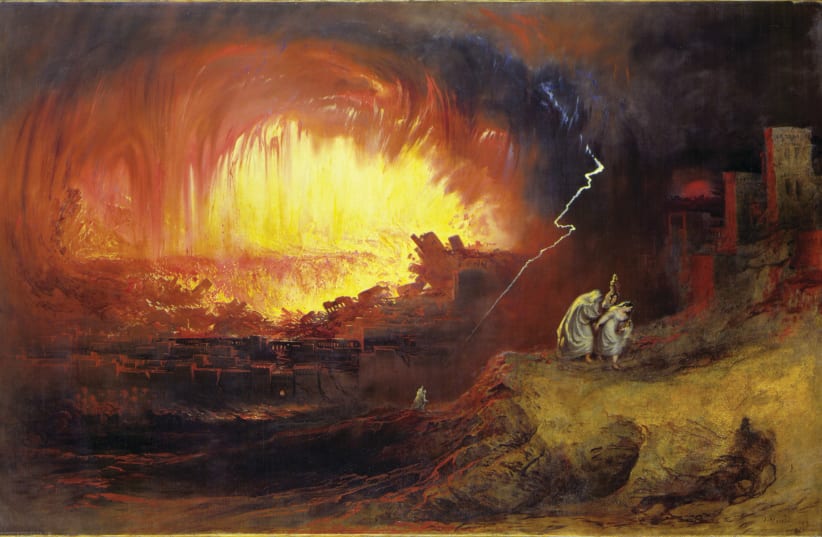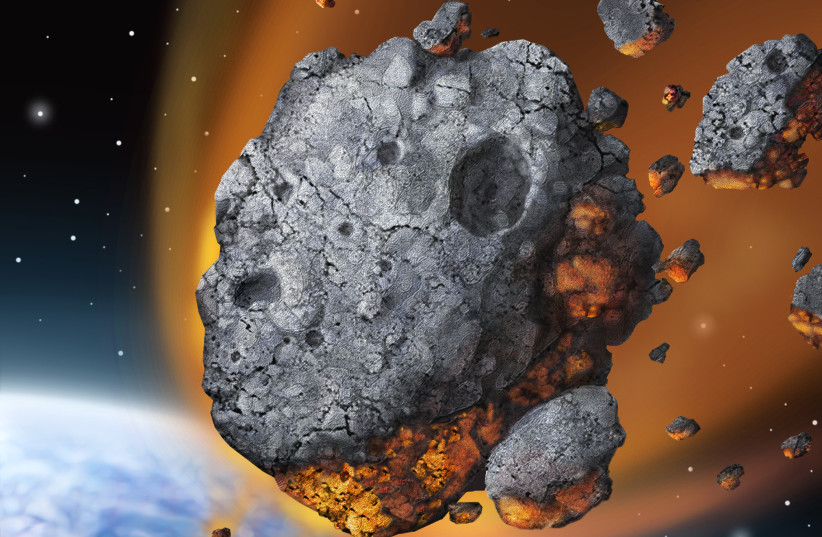Tell el-Hammam in the Jordan Valley might have inspired the story of the destruction of Sodom and Gomorrah, according to a new study that has spanned 15 years.
In the study, published in the journal Nature on Monday, archaeologists researched the remains of Tell el-Hammam in an attempt to discover what destroyed the ancient city during the Middle Bronze Age.
During the period, there were roughly 50,000 people living in the area of the Jordan Valley in three cities: Tell el-Hammam, Jericho, and Tell Nimrin, with Tell el-Hammam the biggest of the three, implying that until its destruction, it would have been the political center of the area.
Radiocarbon dating dates the destruction to within 50 years of 1650 BCE.
Examination of the remains revealed evidence of a destructive event that involved high temperatures, such as pottery pieces that were melted and boiled on the exterior, but normal on the inside.
The buildings of Tell el-Hammam were made of mud bricks, some five stories tall. In the upper part of the city, the destructive force demolished the buildings to the height of their foundations in the walls, and little mud-brick remained. Of the palace that was in this part of the city, the first floor walls and the upper stories are missing, and most of the mud-brick was pulverized.
In the lower part of the city, the buildings suffered more severe damage, and researchers found evidence of heat-fracturing in the remains.
The towers in the wall that surrounded the city were also destroyed, with mud-brick remains only existing at the height of the towers’ foundation.
To try to discover what could have caused this destruction, the researchers compiled a list of possible events and tested their probability relative to the evidence found at the site.
They initially examined the possibility of a fire, warfare, volcanic eruption, earthquake or lightning, but concluded that these events were unlikely to cause the kind of destruction that they found at the site, because none could have produced the intense heat required to cause the melting that they found.
Having dismissed these events, the researchers turned to two other possibilities: cosmic impact or a cosmic airburst.
The consequences of a crater-forming cosmic impact matched all the evidence found by the archaeologists, but it was dismissed as unlikely because no crater was found in the area.
The most likely cause of destruction was a cosmic airburst caused by a comet or meteorite. The consequences of such an event also match the evidence found by the researchers, and using an impact calculator, they were able to estimate the details of the event, which also involved the shock wave hitting Jericho that was burned to the ground.
It can be assumed that the event that destroyed Tell el-Hammam would have been witnessed and recounted through the generations until the time of the biblical Sodom, at which point the event would have been an inspiration for the story, which tells of stones and fire falling from the sky to destroy the city.

